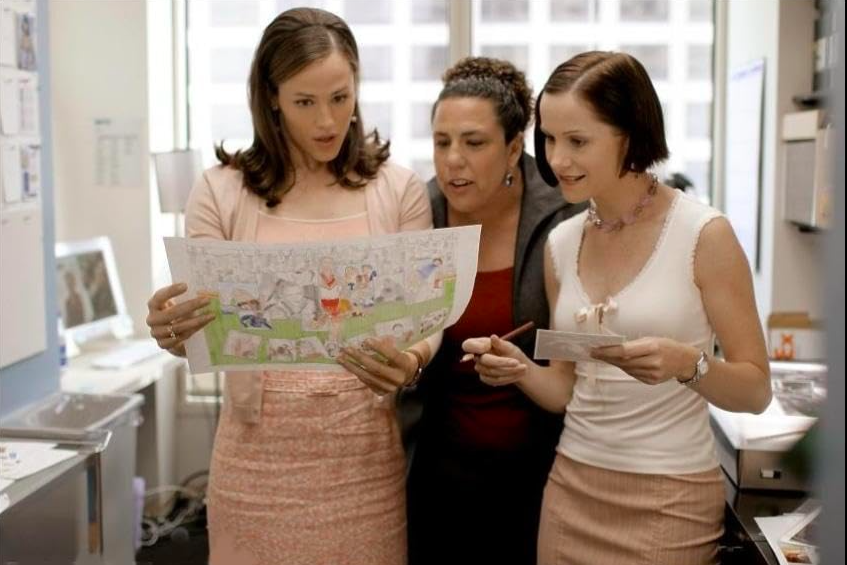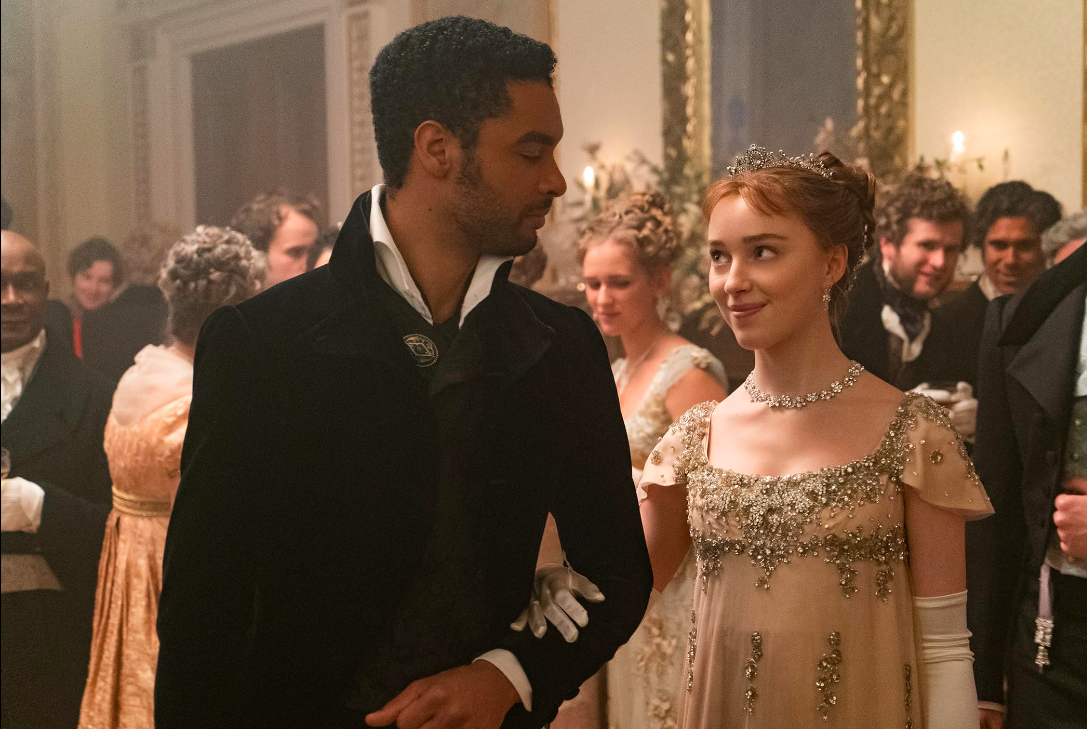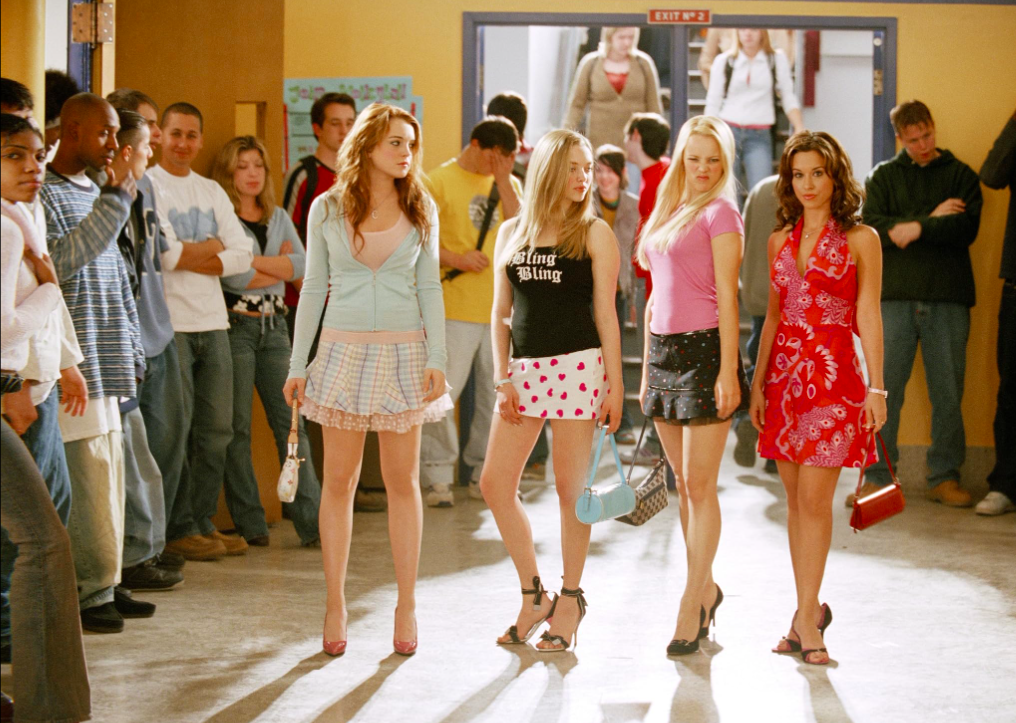By Lauren Durose, Film and TV Co-Deputy Editor
The relationship between film and fashion has long been intertwined; iconic characters and aesthetics have been attempted to be replicated time and again. Certain eras and decades have had longer-lasting impacts, whilst other styles have seen themselves ruled impractical leading to reinvention. Looking back, both film and television have been influential in some of the realms within the world of fashion.

Characters like Elle Woods influenced fashion not in specific styles but in the embracing of bright colours particularly in the professional setting. Her unwillingness to compromise her authenticity results in an array of pink outfits, one of which makes its way to the courtroom. In doing so, Woods spread the message that professional women, even those at the top of their fields who assume positions that so regularly go to men named John, should allow themselves to wear clothes and colours that suit their style and personality. An empowering message, highlighted by a love and understanding of fashion, enabled a change in professional attire.
Much like Legally Blonde (2001), the movies La La Land (2017) and Barbie (2023) saw an active rise in dopamine dressing. The trend encourages participants to wear bright colours and statement pieces (particularly those that are blatantly fun) to help lift one’s mood and make the day-to-day a happier experience. Although not explicitly linked with specific films, many who enjoy the vibrant style have taken inspiration from Emma Stone’s yellow dress or Babie’s overwhelmingly pink world. Arguments have previously been made that dopamine dressing only works if you believe it will, the suggestion is that in projecting brightness and happiness into the world there is probable cause that same energy will be returned to you – either way, it has been seen on multiple occasions that dopamine dressing often follows films with positive messaging and vibrant colour schemes.
Of course, it's easy to argue that film’s impact on fashion is often more aligned with the quick kind. Notable pieces like Jennifer Garner’s 13 Going on 30 (2004) multi-coloured (but mainly teal) dress, have found their way into mainstream styling, as fast fashion brands seize the opportunity to ride the wave of a film's popularity before swiftly moving on to the next monetizable trend. This ultimately doesn’t suggest that the movie had any actual effect on the fashion industry – particularly at the high-end side of the scale – but rather displays how fast fashion corporations capitalise on signature pieces replicating them to feed consumerism. We see this most in relation to film genres like romcoms and chick flicks, notably those that typically reach the demographic of young women.

When it comes to day-to-day fashion, both the nineties and noughties were consistently influenced by what was on their screens. Both Friends and Sex and the City were huge in their impact. With audiences sat at home working out which character they identified with most – were they a Miranda or Carrie? Rachel or Phoebe? – fans began dressing like certain characters, the replication of recognisable silhouettes becoming noticeable. With cult classics like Clueless (1995) and Mean Girls (2004) also being released at this time, the argument could be made that it was really fashion that was impacting film. The consistent referencing of high fashion brands like Vivienne Westwood (Carrie Bradshaw’s wedding dress) or Ralph Lauren (Rachel’s place of work) displays that the relationship between film and fashion can run both ways, intertwining in their influence.
We see this relationship between media and personal style develop not singularly with characters and outfits but in specific aesthetics that are popularised and assumed. Take dark academia: often associated with the Harry Potter franchise, Dorian Gray (2009) or The Dead Poets Society (1989), the neutral colour scheme and scholarly attire has become a favourite for many in its stylistic choice. It sees a significant amount of knitwear and tartan A-line skirts, blazers, and knee-high socks, all supposedly inspired by the idea of the romantic and dimly lit movie that they attempt to replicate. There are a variety of aesthetics that people align their style with; another example includes cottage-core which seems highly reminiscent of fairytales and folklore. All in all, these aesthetics have roots in a variety of media and art, many of which are film-related.
The rejuvenation of fashion is not solely relevant to recent history but can rewind back in time to pieces of more historical significance.
The relevance of period productions like Bridgerton, Persuasion (2022) and Emma (2020) reinvigorated trends much like the corset. Despite its historical significance to female fashion and ability to squish and shift organs, the association of romance and period drama have married together to invite torturous pieces of clothing back into mainstream fashion – although in far more practical and wearable forms now! Equally to the corset, floral maxi summer dresses saw a rise in popularity upon the release of Bridgerton often with capped sleeves and square necklines that were very reminiscent of the evening gowns worn in the 1800s – the century in which all the aforementioned period pieces were set.

The recurring theme seems evident that there is a strong relationship between fashion and film. Arguably film is highly influential over fast fashion, as corporations rush to replicate whichever character is gracing people’s Pinterest boards that month. In contrast, it seems that fashion in its high-end brands and top names reappear continuously in both film and television to the extent that these iconic brands are parodied or reinvented in shows like Emily in Paris as representations of luxury. Either way, the two are intertwined in an enjoyable and notable way.
As younger generations grow up and discover the movies that have established themselves as classics for their decade and genre, we see how fashion trends reappear over time: currently, we may look towards the low-rise jeans of the nineties, or the questionable skirt over jean trend that took over the red carpet in the noughties. Regardless, film and fashion will continue in their relationship to popularise trends and aesthetics, both new and recycled, as they remain integrally connected.
What are your favourite iconic styles in film?








